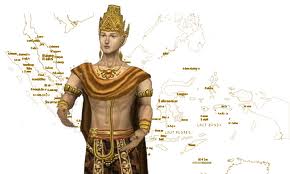
THE SULTANATE OF MALACCA
As a crossroads of trade between the Indian Ocean and East Asia, the Malay Archipelago has consistently been a wealthy, diverse, and politically important region. Islam began to spread in the region through trade not long after the life of Prophet Muhammad (S). For centuries, the people of Southeast Asia slowly began to accept Islam and create Muslim towns and kingdoms.
Perhaps the most important of these kingdoms was the Sultanate of Malacca (Melaka in Malay), which reached its peak in the mid-1400s. As a powerful and influential kingdom, the continued spread of Islam was intricately tied with the rise of the Malacca Sultanate. Unfortunately, however, the Malacca Sultanate would not last, as the newly powerful Portugal conquered the kingdom in 1511 and began a centuries-long period of European domination.
The Rise of Malacca
One of the most important highways of trade in the pre-modern world was the Strait of Malacca. Bordered on its northern side by the Malay Peninsula and on the southern side by the island of Sumatra, it was the main connection between the Indian Ocean and the South China Sea. As a result, most trade traffic in the region passed through this narrow strait, creating rich trade kingdoms on its shores.
As a powerful and expansive kingdom, the Sultanate of Malacca provided a common culture for the surrounding region that neighboring states attempted to adopt. This unified culture helped spark the spread of Islam throughout the region. Adopting Malay culture and converting to Islam were so connected that it was said when someone became Muslim, they masuk Melayu, meaning they “entered the realm of the Malays”.
Adding to the spread of Islam in the region was the continued presence of Indian and Arab Muslim traders coming from the West and bringing their religion with them and spreading it to the local population. Another factor were the numerous visits by the Chinese Muslim admiral Zheng He (who is known as Cheng Ho in Southeast Asia) who helped spread Islam throughout the Malay Archipelago. It is important to note that as the region slowly made its way into the fold of Islam, there were no forced conversions into the religion.

The Arrival of the Portuguese

The Sultanate of Malacca at its greatest extent in the late 1400s.
In the late 1400s, the Kingdom of Portugal began to search for new trade opportunities on the high seas. Instead of relying on land routes to Asian spice markets (that were dominated by the Venetians), the Portuguese decided to find a sea route to China. The explorer Vasco de Gama managed to sail around the southern tip of Africa in the late 1400s, with the aid of Muslim navigators who were familiar with the Indian Ocean.
With this new discovery in Europe, Portugal quickly became a naval power in the Indian Ocean and attempted to dominate the Asian spice market. After establishing bases in Indian cities such as Goa and Calicut around 1510, the Portuguese looked to the East to expand their trade empire. In 1511, they decided to conquer the important port of Malacca to control the trade with China. At first they attempted to create friendly relationships with the sultan of Malacca, Mahmud Shah and use that as a foothold in the kingdom. However, after being warned by Tamil Muslims who had seen Portuguese atrocities in Goa, Sultan Mahmud refused to allow the Portuguese into the city.
 Spinning jenny
Spinning jenny


